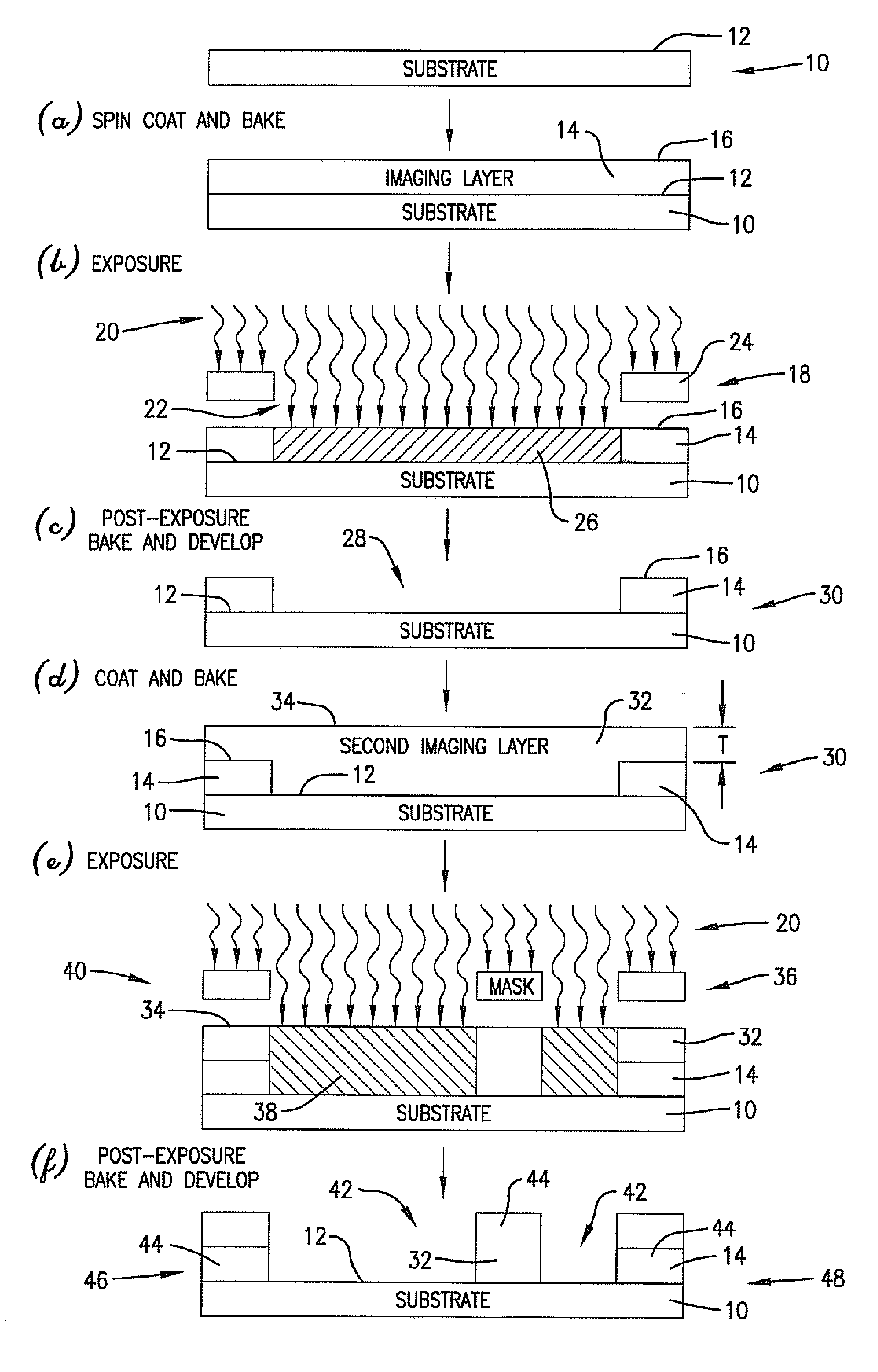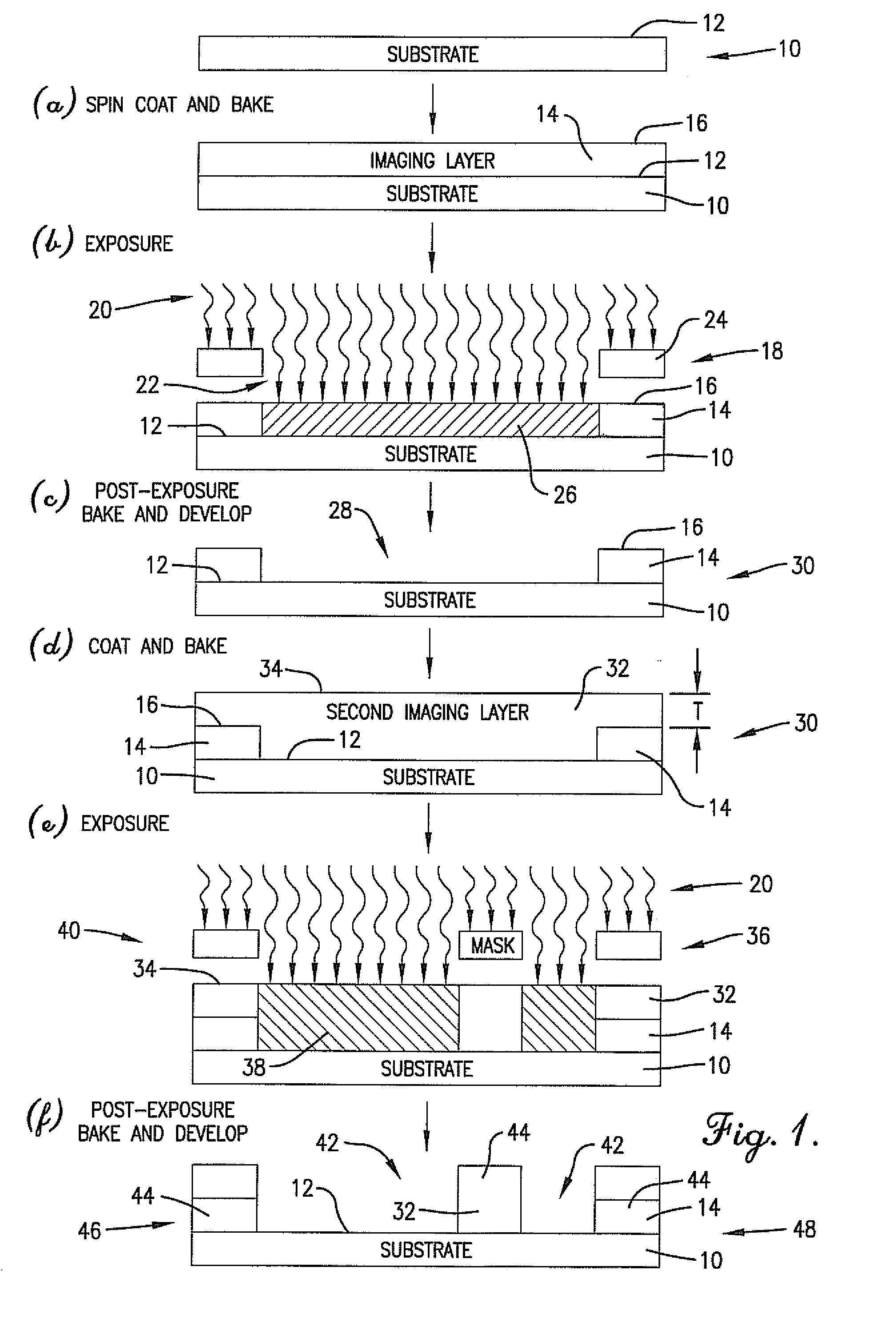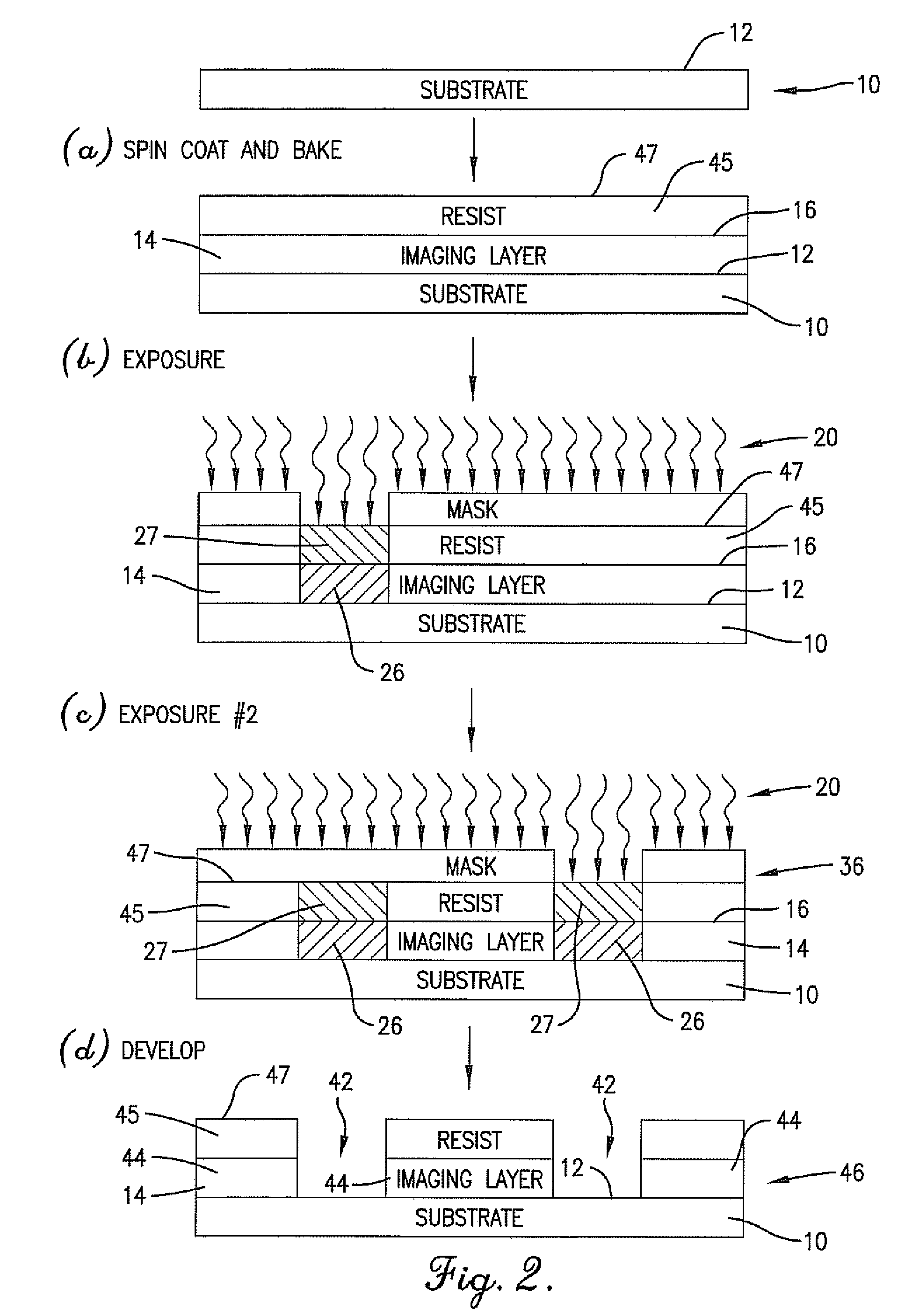Anti-reflective imaging layer for multiple patterning process
a technology of anti-reflective imaging and multiple patterning, applied in the field of new double patterning methods, can solve the problems of destroying photoresist patterns, requiring new tool sets, and high cost of options,
- Summary
- Abstract
- Description
- Claims
- Application Information
AI Technical Summary
Benefits of technology
Problems solved by technology
Method used
Image
Examples
example 1
Coating Formulation Made with Non-Light Absorbing Polymer
1. Preparation of Polymer A
[0067]In this procedure, 9.00 grams of cyclohexyl acrylate (obtained from Polysciences, Warrington, Pa.) and 5.01 grams of methacrylic acid (obtained from Aldrich, Milwaukee, Wis.) were added to a 250-ml, two-neck flask equipped with a stir bar, addition funnel with a nitrogen inlet, and condenser with a nitrogen outlet. These reagents were dissolved by adding 50.00 grams of PGME (obtained from Harcross, St. Louis, Mo.) and stirring under a nitrogen atmosphere. In a separate container, 3.00 grams of dicumyl peroxide (obtained from Acros, N.J.) were dissolved in 36.15 grams of PGME, and this solution was transferred to the addition funnel. The flask was immersed in an oil bath and heated until the solution started to reflux. Upon reflux, the dicumyl peroxide solution was added to the monomer solution. The resulting solution was refluxed for 24 hours. A very light yellow solution was obtained. The solu...
example 2
Coating Formulation Made with Light-Absorbing Polymer
1. Preparation of Polymer B
[0074]In this procedure, 21.29 grains of styrene (obtained from Aldrich, St. Louis, Mo.), 26.17 grams of t-butyl methacrylate (obtained from Aldrich, Milwaukee, Wis.), 25.22 grams of methacrylic acid, and 491.84 grains of PGME were combined in a 1,000 ml, three-neck flask equipped with a magnetic stir bar, thermometer, addition funnel with nitrogen inlet, and condenser. A solution of 1.81 grams of 2,2′-azobis(2-methylpropionitrile) (“AIBN,” obtained from Aldrich, Milwaukee, W), and 164.32 grams of PGME were added to the addition funnel. The flask was heated to 100° C. in an oil bath with stirring and nitrogen flow. After the contents of the flask reached 100° C., the AIBN solution was added to the reaction. Upon complete addition, the reaction was kept at 100° C. for 24 hours. After cooling, the polymer was precipitated in approximately 4 liters of hexanes, rinsed two times with 200 ml of hexanes, and dr...
example 3
Multi-Patterning Process Using Bottom Anti-Reflective Coating
[0076]To make bottom anti-reflective coating Formulation 3, 11.226 grams of Polymer B, 739.3 grams of PGME, 185.0 grams of PGMEA, 3.306 grams of a vinyl ether crosslinker prepared above, 0.859 grains of triethanolamine quencher in 10% PGME solution, and 0.330 grams of a mixture of 50% triphenyl sulfonium perfluoro butanesulfonate and 50% tris-(4-tert-butylphenyl)sulfonium perfluoro butanesulfonate (obtained from Aldrich, Milwaukee, Wis.) were combined and filtered through 0.1-micron endpoint filter. To test the multiple patterning process, the formulation was spin-coated at 1500 rpm onto a silicon substrate and then baked at 160° C. A 1-inch circular mask was placed over the film and then exposed using a mercury-xenon lamp, post-exposure baked at 130° C. for 90 seconds, immersed in developer (MF-319) for 60 seconds, rinsed with deionized water, and spin dried. The process left a circle printed on the substrate with a thick...
PUM
 Login to View More
Login to View More Abstract
Description
Claims
Application Information
 Login to View More
Login to View More - R&D
- Intellectual Property
- Life Sciences
- Materials
- Tech Scout
- Unparalleled Data Quality
- Higher Quality Content
- 60% Fewer Hallucinations
Browse by: Latest US Patents, China's latest patents, Technical Efficacy Thesaurus, Application Domain, Technology Topic, Popular Technical Reports.
© 2025 PatSnap. All rights reserved.Legal|Privacy policy|Modern Slavery Act Transparency Statement|Sitemap|About US| Contact US: help@patsnap.com



